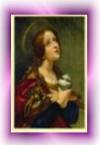A Protestant Consideration of Icons
March 1993By David T. Koyzis
David T. Koyzis, a member of the Christian Reformed Church, is Assistant Professor of Political Science at Redeemer College in Ancaster, Ontario, Canada.
For the last century and a half, Western culture has become oriented around the photographic image. So much are photographs part of our lives that we scarcely give them a second thought. From where you and I are now sitting we are probably within arm's length of a photograph of some sort -- perhaps on the front page of a newspaper or the cover of a magazine. Even the bound collections of paintings by Edward Hopper or Georgia O'Keefe lying on the coffee table contain photographic reproductions of their art.
It is the rare person nowadays who does not have hundreds of photographs of loved ones. Moreover, nearly all of us are able to relive our own lives by perusing old photographs from our infancy up to the present. But it is when, say, a cherished grandmother dies that our continued possession of her photographic image becomes most precious. To see her face smiling (or grimacing) at us through the camera lens is to rescue a part of her from death. It is a way not only of reinforcing a memory, which might otherwise fade with the passing of time, but of making that person present with us in a vividly visual way.
My father was born on the island of Cyprus. In 1974 virtually all of our relatives there lost their homes when Turkey invaded and occupied the northern third of the island, including their hometown of Famagusta. In the space of a few short days they became refugees and had to begin their lives anew in Limassol, Larnaca, and other cities in the south. To be exiled from one's home is catastrophic. It is not simply a matter of losing material things, which are replaceable, but of being radically alienated from a settled community with its sense of security and belonging.
Something happened a year later to underscore the poignancy of this situation: My maternal grandmother died. We had grown up with her, and in the weeks following her death we pored over the old photo albums, reviewing the life of this woman we had loved so dearly and were now missing so much. Looking at her photographs could not literally bring her back, but they somehow brought us back to her at the various stages of her earthly journey and allowed us to keep something of her for ourselves. Possessing her image somehow made the Christian doctrine of the Resurrection of the Body seem more plausible -- less a leap of faith than it might have been for our pre-19th-century ancestors. It also bridges the generations in a way that was unavailable to our more distant forebears: Her great-grandchildren are able in some way to know this woman whose life entirely preceded theirs -- to experience her smile and perhaps to see something of themselves in her.
Later that same year my father's eldest sister, Marketou, died rather suddenly and unexpectedly on Cyprus. She was not at all old, and she left behind a widower, a daughter, a son-in-law, and two grandchildren. My father had not seen her in nearly 30 years, and my mother and sisters and brother and I had never known her. To us she was simply a name from my father's stories about growing up. We grieved, of course. But it was a borrowed grief that grew out of our love for him and not out of missing her.
As it turned out, however, we did have something of her which her immediate family did not. Some months later I found lying on our dining room table a small assortment of reprinted photographs. One was of my late Aunt Marketou standing beside her young daughter. The original photograph was probably some 25 years old and it had evidently at one time been folded. The reprint faithfully reproduced the black-and-white prototype, including the crease running across, and somewhat disfiguring, my aunt and first cousin. That's when it hit me: These photographs were all any of us had left of my aunt. My parents were planning to send them back to their niece, whose own photographs of her mother had been lost in the invasion. The only remaining images of her were the ones my father had brought over to the States in 1951.
The irony was not lost on me. Here was a woman who had never been part of my life. She belonged and would always belong to Cyprus. Yet her immediate family, with hearts still aching from loss, had to turn to us to recover something of her. This experience gave me a new appreciation for the photographs we so often take for granted. Moreover, it gave me, with my Presbyterian and Baptist upbringing, a somewhat better intuitive understanding of the role icons play in the piety of my Orthodox relatives on Cyprus. What ran counter to my own religious sensibilities was to them a natural way of making more vivid the presence of the resurrected Christ and the communion of saints -- and of making these realities less of a leap of faith than they are for those of us from more iconoclastic traditions. Recalling Michael Ignatieff's recent assertion that photographs are the household icons of a secular culture, I am left to ponder whether the keeping and veneration of icons is, after all, so very different from our own keeping of treasured photographs of loved ones, a part of whom might otherwise be lost to us in this life.
NOR
.... with my Presbyterian and Baptist upbringing....
.... with my Presbyterian and Baptist upbringing....
Devotion to the souls in Purgatory contains in itself all the works of mercy, which supernaturalized by a spirit of faith, should merit us Heaven. de Sales
